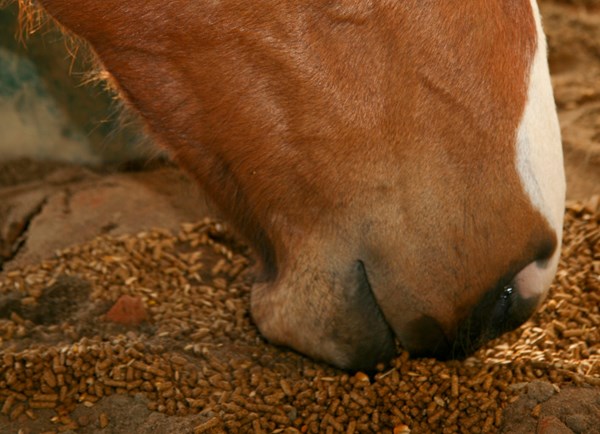 Credit: Thinkstock
Credit: ThinkstockResearch shows that management techniques that reduce the insulin response to feeding in horses have application in preventing insulin resistance and potential associations with diseases such as laminitis. Eight mature idle horses with a body condition score between 5 and 6.5 and with no previous indication of insulin resistance were fed a meal of concentrate under four different feed delivery treatments by researchers at North Carolina State University.
Treatments were all based on a bucket of equal dimensions. The treatments included a control and three treatments hypothesized to increase time to consume feed: mobile obstacles (BALL) above the feed, stationary obstacles below the feed in the form of a waffle insert (WAFFLE), and feed with water added (water).
Jugular venous blood samples were taken at feed delivery, every 10 minutes for the first hour, and then every 30 minutes until 300 minutes after feed delivery. The time to consume feed was different across treatment and was greater buckets with the BALL and WAFFLE obstacles when compared with the control and water added feed.
Glucose and insulin concentrations increased after feeding and tended to differ among treatments. Peak insulin and glucose concentrations were affected by treatment as were the time to peak insulin and the area under the curve of insulin. Therefore, feed delivery methods that include obstacles effectively increase time to consume feed and attenuate postprandial glucose and insulin concentrations.
A second experiment was designed to determine if the time to consume feed changes associated with BALL and WAFFLE obstacles in experiment one remain effective over a four-day period. Four horses with no recent or regular history of consuming concentrates were fed concentrate meals for four consecutive days using the same treatments described in experiment one. Horses were subject to a four-day adaptation period and were randomly assigned to four-day treatment periods using the four previously described treatments.
During adaptation, time to consume feed decreased over time. After adaptation, WAFFLE had greater time to consume feed when compared with the control and feed with water added, whereas feed with water added had the lowest time to consume feed overall.
Using obstacles to increase time to consume feed on a daily basis may be an effective method to reduce postprandial glucose and insulin concentrations, thereby decreasing the risk of insulin resistance development in horses.



